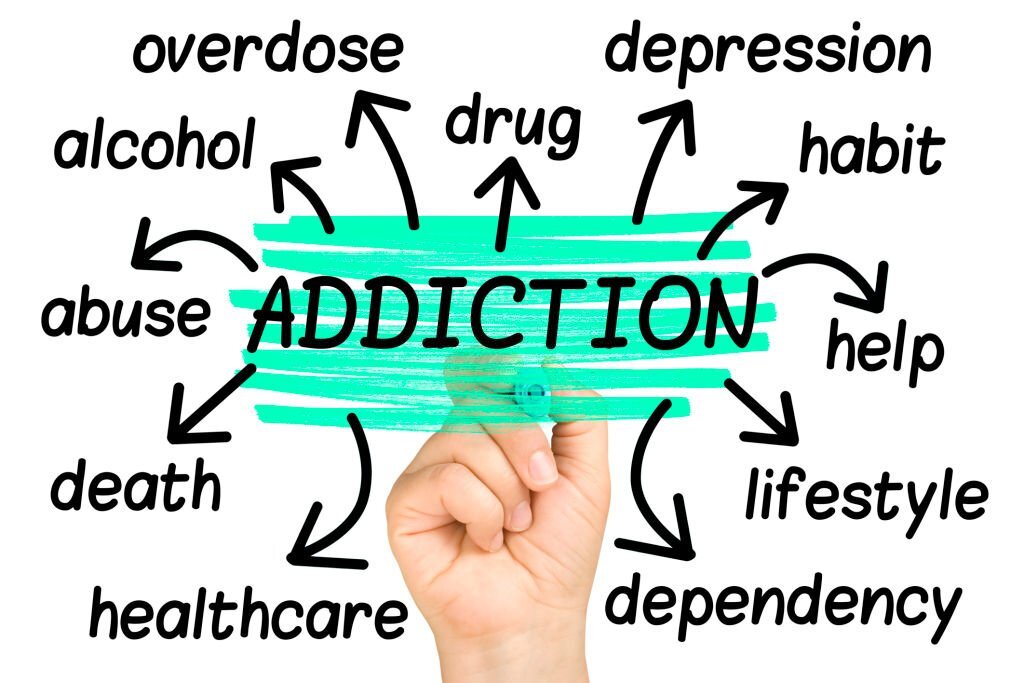Substance abuse – visitor induction for this unseen reality in construction

“Welcome to our virtual site induction training for the construction industry.
Our main agenda remains safety.
So primarily, we will mull over some basic safety protocols that must be followed at all times while working on a construction site. This includes wearing proper protective equipment, such as hard hats, steel-toed boots, and high-visibility clothing. It is also important to follow all posted signs and warnings, and to always be aware of your surroundings.
Next, we will discuss the importance of teamwork and communication on a construction site.
It is crucial that everyone works together and communicates effectively to ensure the safety of all team members and the success of the project.
We will also cover the proper use and maintenance of equipment, as well as the correct handling and disposal of materials.
It is important to follow all instructions and guidelines to prevent accidents and injuries.
Finally, we will go over emergency procedures and protocols in case of any accidents or injuries on the site. It is important to know what to do in these situations to ensure the safety of everyone involved.
We hope this brief animation has been helpful in preparing you for a successful and safe career in the construction industry. “Thank you for participating, and we look forward to working with you.”
This is a small setup and an example of how to do a construction site induction and orientation online!
But nowhere is substance abuse mentioned.
Isn’t this a hazard that needs to be addressed?
Far from being physical, it has psychological effects that are immeasurable.
Construction is physically and intellectually taxing work, and taxing work frequently results in aches and pains.
Drugs are frequently used as a solution. Self-medication can be the beginning. Treatments that a doctor has recommended may be just a beginning. And to begin with recreational use is a never-ending addiction. That can go, realized or unrealized, depending upon the situation.
Nevertheless, substance abuse and addiction are becoming major problems for construction industry workers all around the world.
One of the industries with the greatest incidents of substance addiction and related diseases is construction.
It is one of the top three industries in the US for issues like severe alcohol usage, prescription medication misuse, illegal drug use, and substance addiction disorders.
Particularly when compared to other industries, the data on drug misuse in the construction business are frequently concerning.
- Third in the use of illicit drugs (12.95%)
- Second place for binge drinking (16.02%)
- Substance use disorder came in second with 16.07%.
- marijuana use is highest with 60.33%.
- Heroin use is highest with 4.42%.
- First in abuse of opioids and painkillers (22.63%)
In 2022, addiction in the construction sector remained a pervasive problem.
Courtesy – COVID-19.
Suffering has been too intense during those months, and it is the psychology and mindset that got diseased.
Here are some strategies used by contractors in different parts of the world to solve the issue:
Drug testing:
Recognizing a problem’s existence is the first step in solving it.
Drug testing conducted both often and randomly can aid in identifying workplace drug usage and abuse.
Many firms provide resources to aid their team members in recovering from addiction. Zero-tolerance attitude is a harsh step towards their recovery and goes a long way in making their situation worse.
Considering local, state, and national laws as well as the company’s contractual duties before implementing a zero-tolerance policy helps assess the gravity of each situation and provides ideas for tackling it in the right direction.
Programs for therapy and treatment:
Programs for both inpatient and outpatient therapy are the most popular methods for helping people overcome drug misuse (with counseling). Numerous insurance plans cover various forms of addiction therapy. Post this information somewhere that is visible to and convenient for your staff.
Fostering a more nurturing culture:
Even on the best of days, construction work can be physically taxing. Companies are starting to develop a culture that takes measures to lower the physical and mental strain an employee feels, reducing the likelihood that they will turn to drugs or alcohol as a coping mechanism. This is a wiser step than merely focusing on the outcome—the substance misuse.
It doesn’t matter if it’s a gym membership allowance, a monetary bonus for a job well done, a subscription to a mindfulness app, etc.; occasionally saying, “You know what? Today’s lunch is on me!—compassion can also go a long way.

Using Technology to Our Benefit
The physical and mental strains on employees that could traditionally occur on a jobsite are being reduced by some solutions, such as construction prefabrication in safer, more regulated locations.
This has led to the development of numerous new tools and software programs that can be used to treat workplace substance usage and avert potential triggers.
Even virtual training within safety animation can guide the workers and let them know that such abuse temporarily instills good feelings, but eventually, is harmful, emotionally, physically, and psychologically.
Here are five technological strategies to cut down on drug abuse opportunities:
1.Prefabrication Can Reduce Risk
Prefabricated construction methods are becoming more common because they are less expensive and simpler to assemble. Taking personnel off the typical job site and reducing the amount of hard lifting can aid in avoiding accidents that might result in the prescription of opioids and eventual addiction.
2.Digital tools for management and HR
Physical paperwork is no longer used. The digitization of management and HR technologies makes it simpler for team leaders to keep track of crucial data, such as the outcomes of drug tests.
The dissemination of information to the entire team is facilitated by digital methods on the HR side. This involves recognizing those who are at risk for mental illness or drug abuse and providing key whereabouts and insights into their personalized treatment programs.
Drones are just another piece of equipment that keeps workers safer on the jobsite.
3.Robotics
Repetitive or hazardous operations have a history of endangering construction workers’ lives, as it becomes mandatory for them to work with, and around them. This can be replaced by robotics and automation. Avoiding accidents is essential to preventing the prescribing of addictive painkillers. By utilizing this technology, productivity and efficiency can be increased, making it simpler to fulfil deadlines.
4.UAVs
Inspections of the safety of the workplace are crucial, but evaluating projects that aren’t completely finished might be risky as you start working your way up a few storeys. In these high elevation inspections or photo reporting, drones remove the risk and the human element, accomplishing the same responsibilities without endangering human personnel.
5.Fashionable Tech
Wearables for construction sites can enhance workplace safety in a variety of ways. Heart rate and stress levels can be monitored by even the most basic fitness watch. A person’s location on the job site, their level of weariness, and even if they’ve fallen can all be determined by more sophisticated gadgets.
Although this technology can’t yet detect drug usage at work, the data it collects may be able to guide site managers and business owners in the proper direction.
In order to foster a culture of safety, it is necessary to identify strategies to shield employees from all potential risks, including the possibility of psychological difficulties.
Strive to create a workplace that is understanding of the particular challenges that construction workers encounter, and offer the resources required to keep employees healthy and thriving.



Highly Recommended article